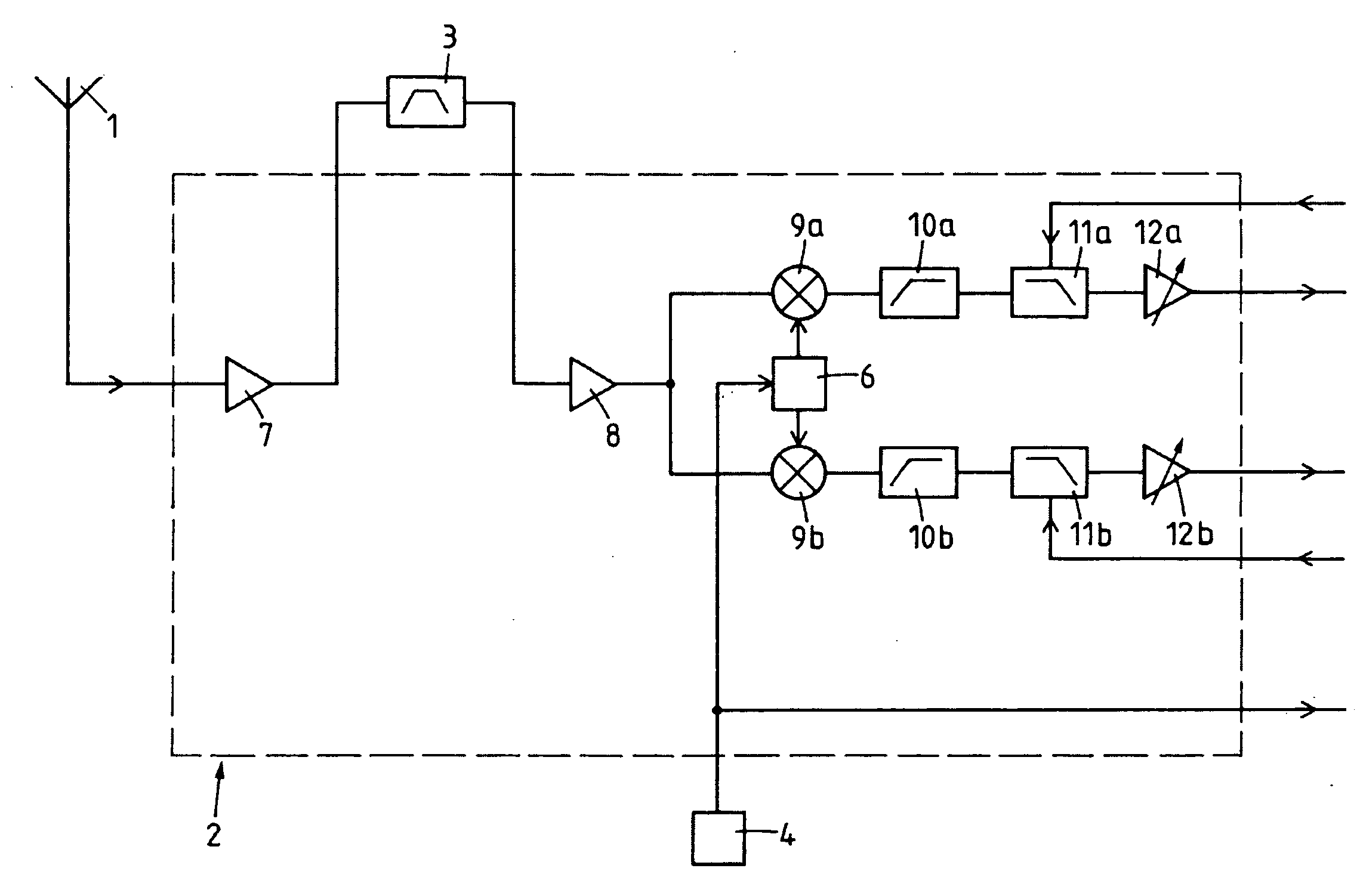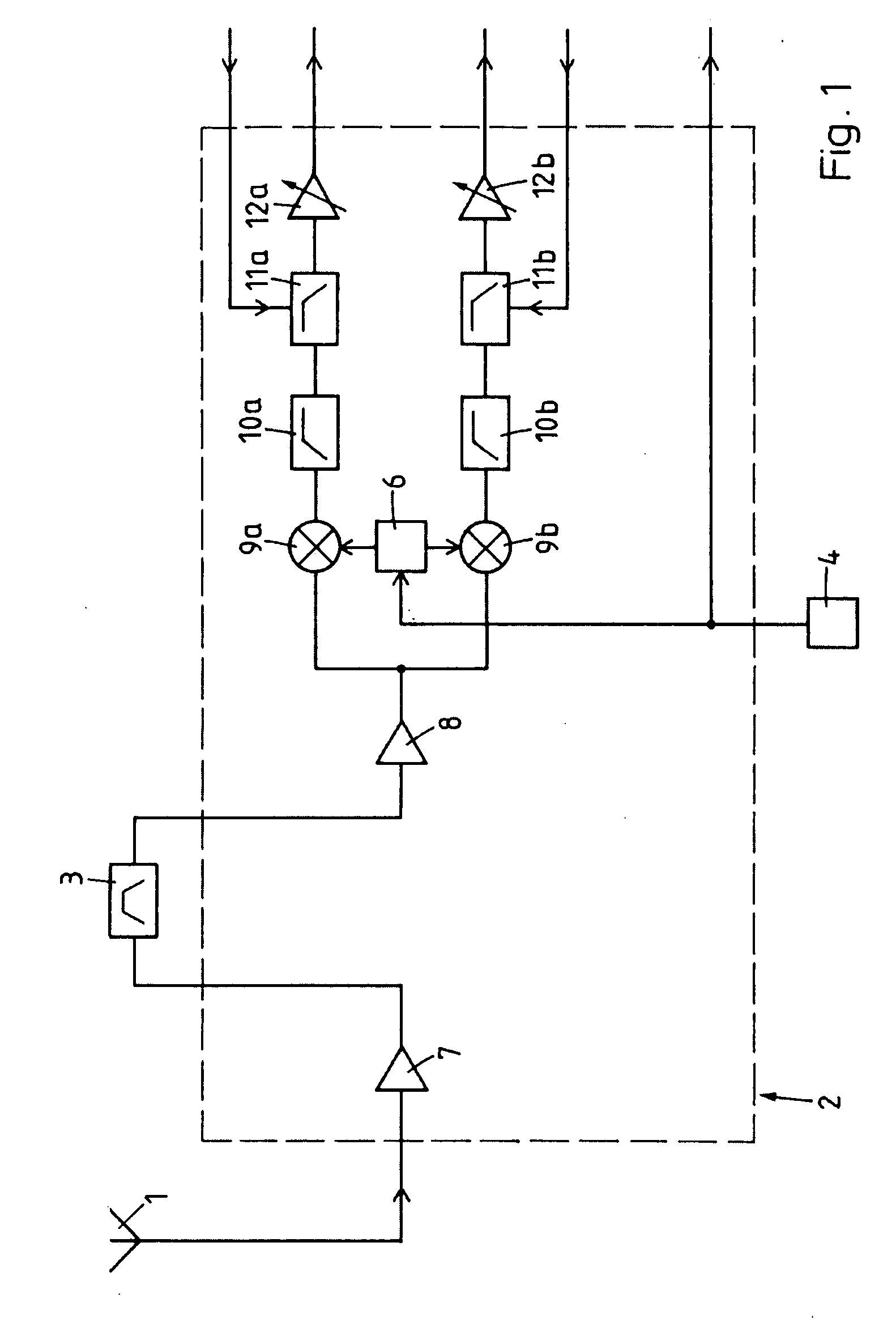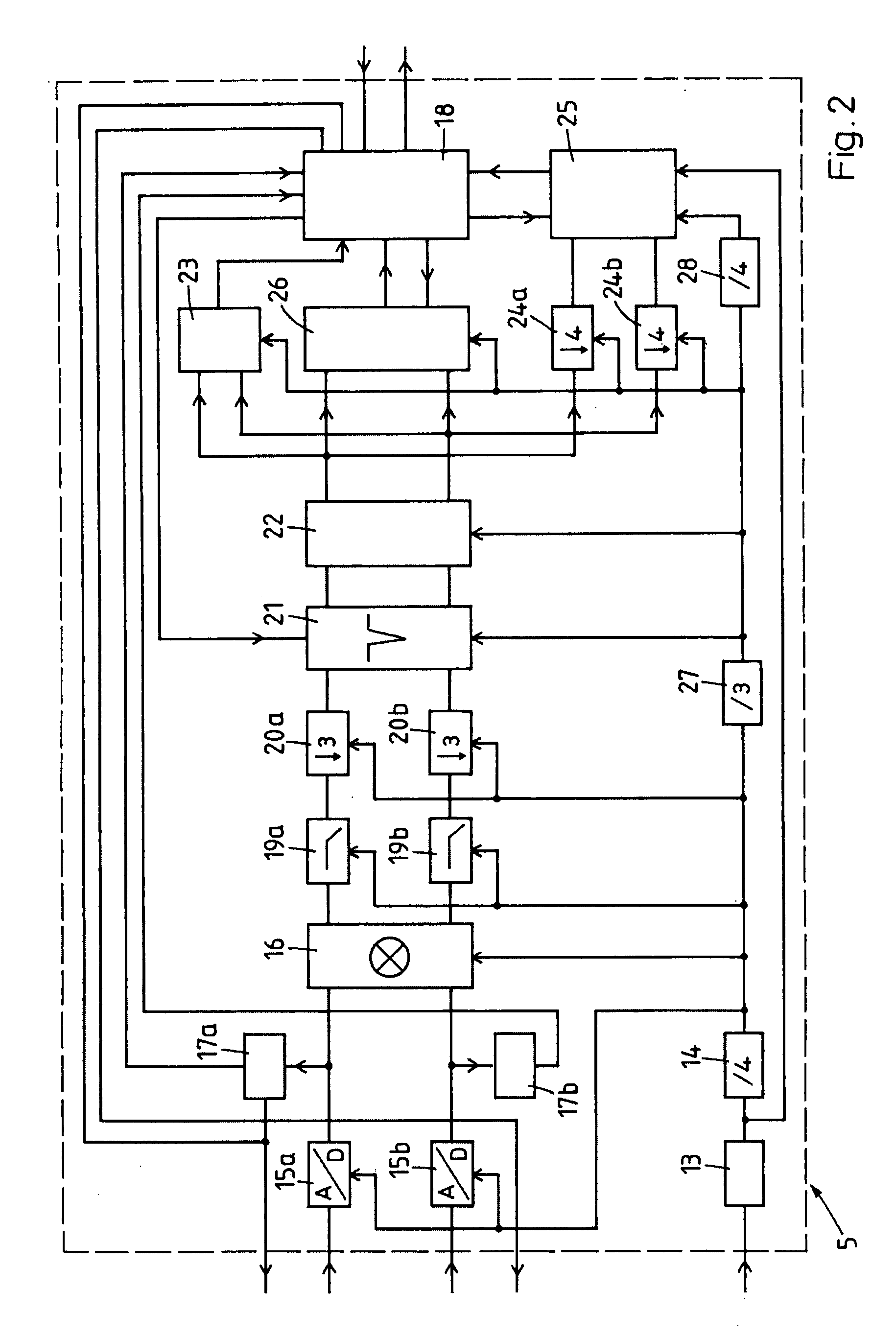Method of processing a digital signal derived from an analog input signal of a GNSS receiver, a GNSS receiver base band circuit for carrying out the method and a GNSS receiver
a digital signal and receiver technology, applied in the field of processing a digital signal derived from an analog input signal of a gnss receiver, can solve the problems that the band stop filtering unit contributes only minimally to hardware complexity and expenses, and achieves the effects of avoiding distortion of digital signals, reducing hardware complexity, and reliable suppression of continuous wave interferen
- Summary
- Abstract
- Description
- Claims
- Application Information
AI Technical Summary
Benefits of technology
Problems solved by technology
Method used
Image
Examples
Embodiment Construction
[0012]The embodiment described in the following is a receiver suitable for GPS. However, the modfications which are necessary if other systems like GALILEO or GLONASS are to be used are straightforward. The receiver comprises (FIG. 1) an antenna 1 followed by a radio frequency circuit 2, a bandpass filter 3, a TCXO (temperature compensated crystal oscillator) 4 and (FIG. 2) a base band circuit 5. It is advantageous to implement the radio frequency circuit 2 and the base band circuit 5 each on a separate semiconductor chip but other solutions are also possible.
[0013]The bandpass filter 3, usually an SAW (surface acoustic wave) filter, is a component external to the radio frequency circuit 2. The TCXO 4, also a separate component, provides a basic frequency of between 19 MHz and 40 MHz, e.g., 26 MHz, which is fed to the radio frequency circuit 2 and further to the base band circuit 5. In the radio frequency circuit 2 the output signal of TCXO 4 controls a PLL unit 6 which produces a 3...
PUM
 Login to View More
Login to View More Abstract
Description
Claims
Application Information
 Login to View More
Login to View More - R&D
- Intellectual Property
- Life Sciences
- Materials
- Tech Scout
- Unparalleled Data Quality
- Higher Quality Content
- 60% Fewer Hallucinations
Browse by: Latest US Patents, China's latest patents, Technical Efficacy Thesaurus, Application Domain, Technology Topic, Popular Technical Reports.
© 2025 PatSnap. All rights reserved.Legal|Privacy policy|Modern Slavery Act Transparency Statement|Sitemap|About US| Contact US: help@patsnap.com



